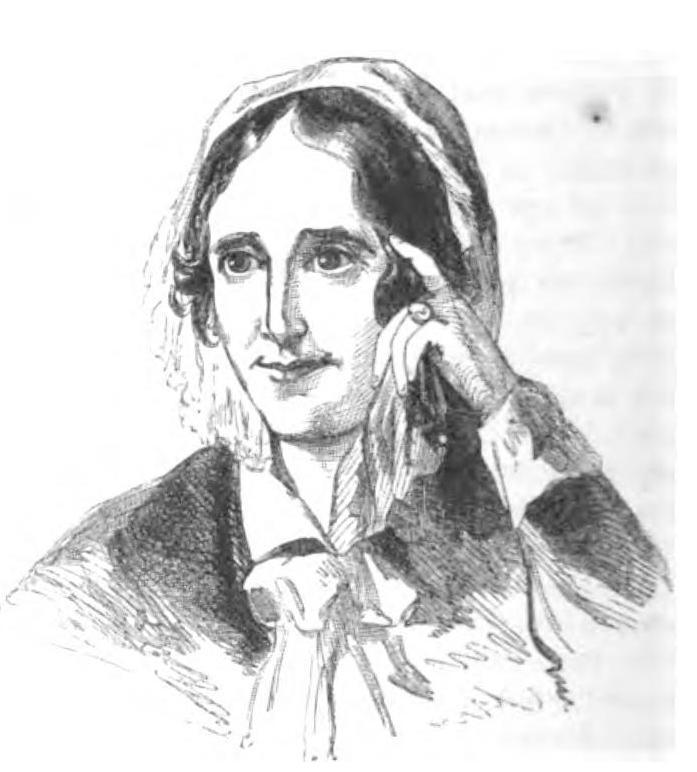
Margaret Mercer was born on July 1, 1791, daughter of John Mercer, the future 10th Governor of Maryland (1801-1803), and his wife Sophia Sprigg Mercer. Margaret was one of four children. Her father John had been a member of the Virginia House of Delegates after serving in the American Revolutionary War; however, after marrying Sophia he moved to her estate, Cedar Park, in Anne Arundel County. She grew up on the family estate in Galesville and read widely from her father’s library. Margaret determined two things at a young age: that she would not marry; and, more importantly, that slavery was immoral.
John Mercer died in 1821 with $17,000 of debt that he passed on to his children. At that time, Margaret inherited a number of her father’s 72 enslaved individuals. Creditors pushed Margaret to sell the men and women whom she had inherited but she refused, not wishing to break up families. While her brother, John, inherited Cedar Park and remained on the plantation, Margaret moved to Essex County, VA, where she lived with her uncle, James Mercer Garnett, a former member of Congress and prominent planter. Margaret worked with her cousins, Garnett’s daughters, teaching at a local school in Elmwood, VA for four years. During this time, Margaret joined the Virginia Colonization Society, a branch of the American Colonization Society. The society advocated purchasing the freedom of enslaved people and resettling them in Africa. In 1823, the American Colonization Society purchased land on the Guinea Coast of West Africa, naming it Liberia. Throughout those four years in Virginia, Margaret corresponded with prominent members of the Colonization Society, including her cousin Congressman Charles Fenton Mercer, one of the founders, and her cousin John H. B. Latrobe, a Baltimore architect.
In 1825, Margaret returned to Galesville and Cedar Park, founding a girls school called “The Cedar Park Academy,” which she ran out of her family home until 1834. The school focused on teaching girls math, astronomy, natural sciences, philosophy, religion, agriculture, and public health. The profits she raised from running the school were used to settle the family debt. During this time she manumitted all of the enslaved men and women she had inherited from her father, including the Young family, John, Milly, and their son Forrester in 1830, and a woman named Nelly Sparrow. In 1832, six of the people whom she had manumitted were sent to Liberia under the auspices of the American Colonization Society. Sometime that year, they arrived in Liberia aboard the schooner “Margaret Mercer.” The Captain of the schooner, Abels, remained in Liberia for 13 days and wrote a letter about his positive experience there, which was published by the Colonization Society. Unfortunately, within three years the Liberia experiment proved unsuccessful: of the six people sent to Liberia by Margaret, three people had died, one had returned to the United States, one had moved elsewhere in Africa, and one was never heard from again. Margaret never sent any more people to Liberia, and similar results among many of the freedmen and women settling in Liberia led to a decline in the entire Colonization movement.
In 1836, Margaret heard from her cousin, Charles Fenton Mercer that Ludwell Lee, a Loudoun County, VA planter and politician who had co-founded the Loudoun County chapter of the American Colonization Society had died and his heirs had placed his 1,000 acre plantation, Belmont, up for sale to pay off debts. By that summer, Margaret had moved to Belmont. In the fall, she opened a second school for girls called the “Belmont Academy,” and in December she formally purchased 400 acres of the property for about $7,000 dollars (the modern equivalent of approximately $150,000). The purpose of the school was agricultural education as a way to remove the need for enslaved labor. Other courses were in philosophy, ethics, the Bible, French, Latin, geography, geology, and astronomy. Her commitment to ethical education was such that she even wrote a book on the topic for use in the classroom in 1841: Popular Lectures on Ethics, or Moral Obligation: For the Use of Schools.
Most of the students at Belmont Academy were daughters of the local landed gentry, who paid $250 a year in tuition and $10 a year to board on the property. Local children also studied at the school, including the children of enslaved families and free African American women. At its peak enrollment under Margaret’s management there were 45 students enrolled and seven instructors employed. While the colonization efforts of Liberia waned, Margaret was continually committed to the abolitionist movement; in 1842 she purchased 22 enslaved men and women from her brother John Mercer, all of whom she manumitted.
Margaret Mercer died at Belmont on September 17, 1846 from tuberculosis. She was 55 years old. Belmont was subsequently purchased by George Kephart, whose eldest daughter, Eugenia Kephart, continued to run the school Margaret had started, moving it to Oak Hill Plantation in 1856, before it closed in the 1870s when Virginia’s new constitution enabled free public education. One of the executors of Margaret’s estate, her nephew Richard S. Mercer, most likely used some of the proceeds of the sale of Belmont to build the Parkhurst manor in Harwood, near to the family home of Cedar Park. In 1848, Casper Morris wrote a biography of Margaret Mercer, The Memoir of Miss Margaret Mercer. Margaret Mercer was a woman committed to her ideals and spent her entire life focusing on the causes of abolition and education.
A couple of sources used for this summary that are unlinked above include:
Loudoun Times-Mirror September 10, 2018: “More than a footnote: Locals honor the legacy of Margaret Mercer.”
The Washington Post March 17, 2002: “A Life Devoted to Freedom and Opportunity.”
Contributed by Amelia Chisholm, Archaeological Laboratory Director, Anne Arundel County Cultural Resources Section.
